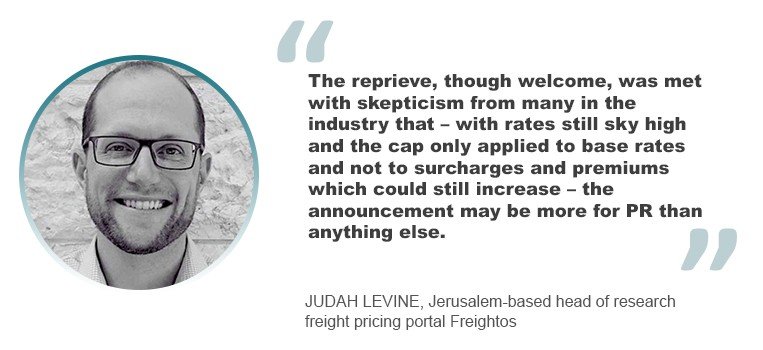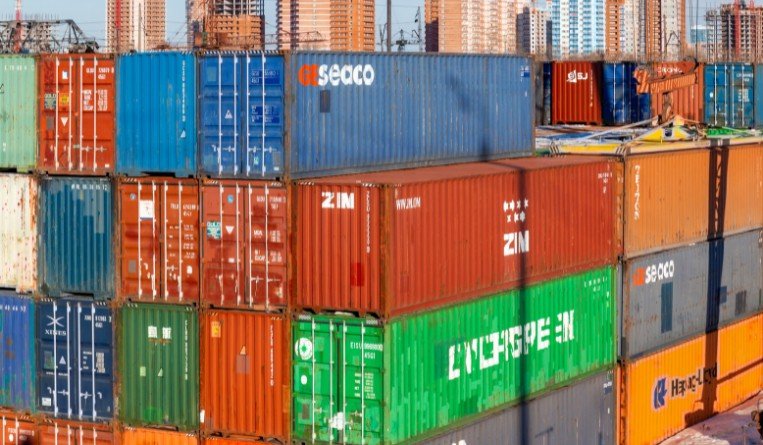According to some carriers, the dizzying surge of rates has finally reached a plateau, but many observers remain skeptical.
Pricing of transportation has been a nightmare for shippers and importers. Rates for ocean and air cargo are in stratospheric heights, pricing of trucking and rail capacity has soared, and warehousing charges are up.
According to freight pricing portal Freightos, all-in rates from Asia to the U.S. West Coast were US$20,582 per 40ft container in mid-September, an increase of 453% year-on-year, while rates from Asia to the U.S. East Coast were up 395%.
In this situation the announcement from CMA CGM last month that it was capping rates until next February came across as a ray of hope.
“Since the beginning of 2021, container shipping spot freight rates have continued to rise due to port congestion and the major imbalance between demand and maritime container transport effective capacity. Although these market-driven rate increases are expected to continue in the coming months, the Group has decided to put any further increases in spot freight rates on hold for all services operated under its brands,” the line declared in September, adding that it was “prioritizing its long-term relationship with customers in the face of an unprecedented situation in the shipping industry.”
Shortly afterwards a spokesman for Hapag-Lloyd declared that spot rates had peaked and further rate increases were not necessary.
Observers treated the news with reservations. “The reprieve, though welcome, was met with skepticism from many in the industry that – with rates still sky high and the cap only applied to base rates and not to surcharges and premiums which could still increase – the announcement may be more for PR than anything else,” said Judah Levine, the Jerusalem-based head of research at Freightos.
Soon afterwards an Asian forwarder called those announcements of rate caps “a big joke”, pointing to a fresh round of rate increases out of India by ocean carriers.
Forwarders have also complained that lines have not responded to e-mail inquiries about rates and ignored phone calls, leaving them at the mercy of daily spot rates if they attempt a booking.
Frustration over carriers is on the boil. In the US anger over the reluctance of container lines to load exports rather than rush empty containers back to Asia, where they fetch more lucrative rates, and over staggering demurrage and detention charges has put pressure on the Biden administration to intervene. The Federal Marine Commission determined that there was a need to increase oversight of those charges. On September 15, it approved initiatives against current billing practices. These aim to offer more immunity to plaintiffs to shield them from retaliatory action by the lines as well as to investigate a need for new rules that would force the lines to reveal more information when billing for demurrage and detention.
Railroads have also come in the crosshairs of the administration. The Surface Transportation Board is scrutinizing their billing practices. The head of the agency stated that the railroads had reduced service while raising rates, which has presented them with US$191 billion in dividends and buybacks since 2010. He raised the possibility of an investigation if the rail carriers were in violation of the common carrier mandate.
These initiatives are driven from the top, following an executive order from the White House for government agencies to crack down on anticompetitive behavior and unreasonable shipping charges and costs. The order was welcomed by the National Industrial Transportation League.
Coming on top of sky-high rates, detention and demurrage charges can add a hefty kick to importers’ bottom line. Demurrage bills for a container can exceed US$10,000. According to one forwarder, an importer in the Memphis area had to pay US$2 million in storage fees in the first half this year. Memphis is one of the most congested rail hubs in the US.
The booming e-commerce sector has also witnessed eye-watering price increases. John Haber, CEO of parcel logistics consulting firm Spend Management Experts, reported that large shippers have been hit by increases of 25-30% by UPS. The large integrators have also relentlessly upped surcharges or added new ones. One large integrator extended its peak season surcharge way beyond the customary cut-off in mid-January – until June.




